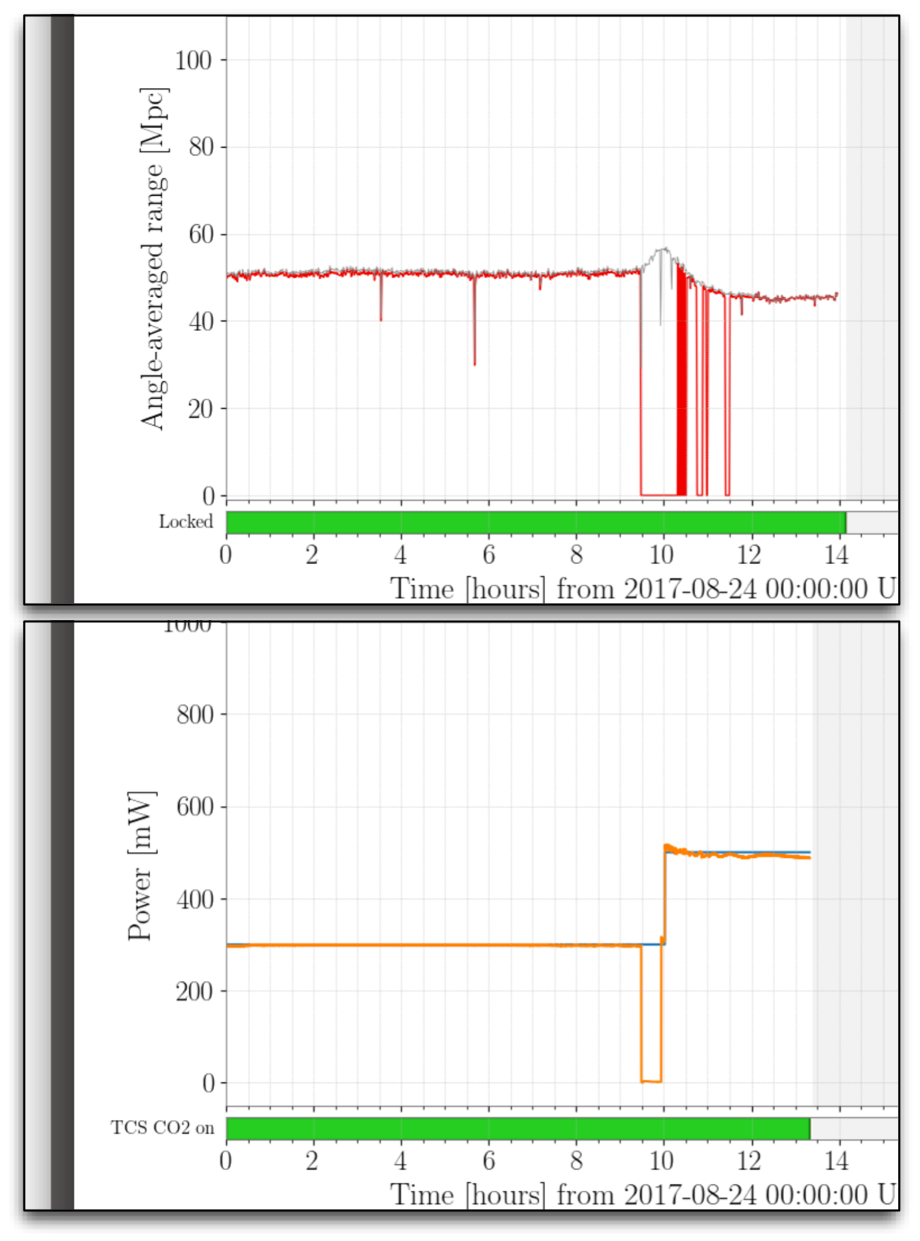09:29UTC "TCSX CO2 LASER output off" verbal happened. After a trip into the LVEA to find the FLOW light tripped on the controller I went into the mezzanine to check the chiller which was NOT tripped. I went back down and reset the controller and everything looked ok except for some SDF diffs in TCS_ITMX_CO2_PWR,TCS_ITMX_CO2, and DIAG_SDF nodes. I called Jason on the phone and he didn't have to much to say about some new Guardian stuff that has been added. I accepted te DIFFS that were showing and took a couple of screenshots.
10:32UTC LASER won't stay locked. It keeps dropping/searching/locking...rinse, lather, repeat. When it locks, the ready bit goes GREEN and I set the Intention bit but it just keeps falling out over and over again.
10:35UTC maybe it will hold this time?
10:46UTC nope
We should look at the TCSX controller as it would seem that the trip point is set differently from the the TCSY controller. It might be that there are two resistor values that may have to be changed.
Here's what the BNS Range plot and the HIFO_RANGE looks like since the TCS issue began. There's an uptick in BNS range and then a drop into the mid-40Mpc range. DARM is also a mess.
[Aidan (remotely), Ed]
I just got off the phone with Ed. It seems that after the TCS CO2X laser reacquired lock, the requested power went to a much higher level (500mW) than that required during steady-state operations (300mW). Given the long recovery time, I advised Ed to drop the request power manually back down to 300mW and then re-enter observing mode if we got kicked out.
Interestingly, the range went UP when the CO2X delivered power was 0.0W. We might try dropping the requested power for the remaining time in O2.

I agree with Peter - we should look at the laser controller first, and the flow meter second. We have a spare chassis that can be swapped in very quickly. At the same time it would be useful to double check the settings on the yellow electronic flow meter that's under the beam tube. If you pop the top off it there is a screen and the current/voltage output range can be checked so we know its output calibration.
Once a laser trips and is turned back on it needs at least 30mins before we try to lock it. Not giving it this time will cause the guardian script to mess around with its thermal state and it will take longer to lock. We should think about whether we should be losing detector time to wait to be able to lock this laser if it does not improve sensitivity. Maybe we aren't gaining a lot from that.
This improved range was due to a reduction in the broadband jitter coupling, which can be seen looking at coherence between the PSL bullseye pit signal and DARM or the IMC WFS B DC PIT coherence, shown in the attached screenshot. (For IMC WFS B there are some peaks from acoustics on the table which are not changed with the TCS settings.)
It not surprising that the this can be improved. It doesn't seem worth changing settings at this point in the run. This noise is subtracted by Jenne's weiner filter cleaning of the data; we know that the spot positions also can improve this noise, and after the long vent we will have both a different PSL laser and hopefully less ITMX absorption.
Opened corresponding FRS Ticket 8846.







